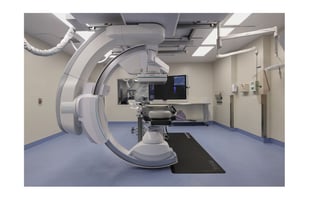Introducing natural light into the ambulatory healthcare setting can have profound effects on both...
Decoding the Differences Between Gross, Rentable, and Usable Area and Why it Matters
There are generally three types of square footage that are considering in real estate and renting space: gross, rentable, and usable area. And, there is a great deal of confusion surrounding their use and how they apply. Understanding their definitions and how they affect your lease deal is important and ultimately affects the amount of space you are entitled to occupy. This post will examine the differences and how they typically apply when renting office space, including medical office.
Understanding Gross Area
Gross area or square footage (GSF) refers to the total floor area within a building, including exterior walls and all interior elements and spaces, including stairs, elevators, structure, mechanical shafts, tenant spaces, and common areas. It is usually measured to the outside face of the exterior wall and may also include overhangs and balconies. It represents the entirety of the building and usually comes into play when developing or buying an entire building. It is important relative to zoning and land use. It seldom matters when renting a tenant space.
Determining Rentable Area
Rentable area (RSF) is the area you pay rent for, including the usable space you occupy plus your pro-rata share of the building's common areas. RSF is typically measured to the inside face of the exterior walls and includes all of the spaces and elements within those walls, except for major floor penetrations or openings such as mechanical shafts, elevator hoistways, stairwells, and atria. Common areas may include building lobbies, multi-tenant hallways, utility rooms, loading areas, cafeterias, conference rooms, fitness centers, and other shared areas or spaces necessary for the building to function.
Rentable area can be illustrated by this simple example: If you lease 1,000 square feet and the building has a 15% common area factor, your RSF would be 1,000 + (15% * 1,000) = 1,150 square feet.
Defining Usable Area
Usable area (USF) refers to the square footage within the office building that a tenant can actually use. It is the area inside of the demising walls that separate the tenant space from the rest of the building and it usually includes the structural and utility components, such as columns or vertical pipes/conduits, that pass through the space. The Usable Area is the area you can actually fit out and determines the number of spaces, such as offices, exam rooms, or operating rooms, you will be able to fit into your facility. USF is typically less than RSF, and this is important to understand when you are negotiating a lease, as RSF is usually what is advertised and ultimately identified in the lease documents.
Making Informed Decisions When Renting Space
These are some things to keep in mind to help you make informed decisions when comparing rental spaces.
1. The Rentable Area, which is the area you will be negotiating in a lease, is typically greater than the Usable Area you can actually fit out. This difference may be 10-20% and sometimes higher.
2. Whether you are renting a space on a multi-tenant floor, renting a full floor, or renting a full building will affect the calculus.
3. You may wish to ask the landlord for both the RSF and USF, or for the Common Area Factor, which is the ratio between the two, to assist in your evaluation.
4. Consult with your real estate professional or architect to help you in evaluating the differences in RSF vs. USF between spaces.
5. Having your architect or designer prepare a fit plan for a space is a helpful way to test that your functional program will actually fit. This is something to consider once you've narrowed down your options.
6. The Building Owners and Managers Association International, or BOMA, has developed widely accepted standards for measuring office space and they are used extensively by landlords and developers in North America. More information about their standards can be found on the BOMA website at:
By understanding the distinctions between gross, rentable, and usable area, you can make informed decisions when seeking a new space and negotiating the terms of the lease. Doing so will ensure you get the optimal value for your budget and a space that meets your functional needs. Contact us at www.hsarchitecture.com if we can help you in the process.




